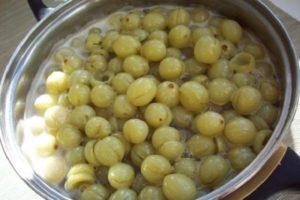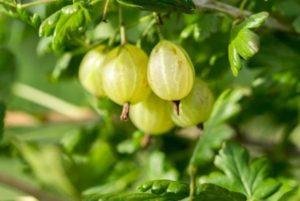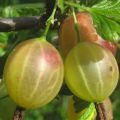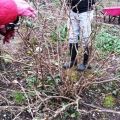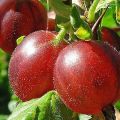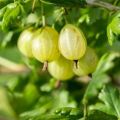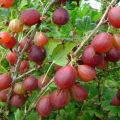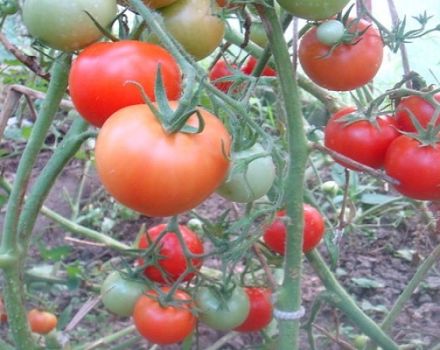TOP 20 best gooseberry varieties for Siberia and the Urals with a description
Useful shrubs are grown in all regions of Russia. The best varieties of garden gooseberries for Siberia were obtained by local breeders of the N.N. MA Lisavenko, as well as the Buryatinskaya experimental station. Plants are acclimatized to the local climate, yield fruits with decent commercial and taste characteristics. An unpretentious crop still requires a little attention and care to ensure high yields and thrive.
Features of growing gooseberries in Siberia and the Urals
The climatic conditions of the Urals and Siberia are considered severe. Not every variety is suitable for growing in them. The plant must have increased frost resistance and be immune to disease. Summer in these parts is short, spring is late. Recurrent frosts can destroy flower buds, so gooseberries with a delayed growing season are preferred.
The best gooseberry varieties
The experience and feedback of gardeners make it possible to single out the best varieties among the available assortment that demonstrate acceptable results in a difficult climate.
Large-fruited
Both beginners and experienced gardeners most often choose large gooseberries for the site. They look delicious and serve as a real decoration for the bush.
Defender
New late-ripening gooseberry with high yields. The weight of the fruit is about 10 g; when ripe, it acquires an unusual maroon color, sweet and sour taste. It survives low temperatures well, resistance to pathogens is average. Thorny bush, high.
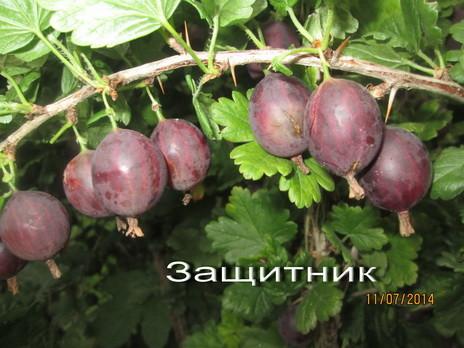
Candy
The bush has a lot of thorns. Gooseberry fruits weigh up to 6 g, when ripe they become pink, sweet and sour. They have a strong aroma. Excellent immunity to disease, but preventive treatments will not hurt. The variety is self-pollinated, frost-resistant, with high yield characteristics. Otherwise, there is a risk of septoria infection.
Cooperator
Medium late shrub of small size. No spikes are formed. Fruits gain weight up to 7 g, in the process of ripening they become dark red in color. Each adult plant produces up to 5 kg of gooseberries. Belongs to dessert varieties due to its high assessment of taste. Possesses sufficient frost resistance and immunity.
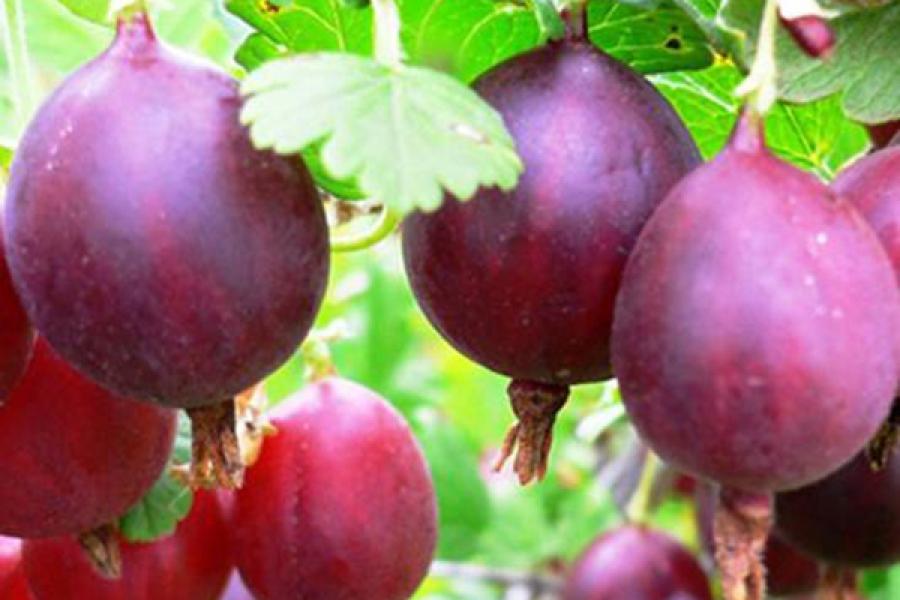
Leningrader
A medium-sized bush almost does not form thorns on the branches. Gooseberry ripening period is medium late. Fruits gain weight up to 10 g, at the stage of technical ripeness they turn red. Each plant gives up to 7 kg of yield.Resists well against fungi, in particular powdery mildew.
Spring
A compact bush that gives berries weighing up to 8 g with a dense skin. At the stage of technical ripeness, the fruits become yellow-green. Gooseberries can be used fresh or used for culinary purposes. Differs in increased resistance to fungi. It bears fruit even in conditions of the established unfavorable weather.

Winter hardy varieties
Gooseberry varieties for the Urals and Siberia should be characterized by good frost resistance. Heat-loving hybrids may not survive the harsh winter even under cover.
Beryl
A medium-sized shrub with formed thorns at the bottom of the branches. Fruits gain weight up to 9 g; upon reaching technical ripeness, they retain their greenish color. Tasting assessments allow classifying the variety as dessert. Each adult plant produces up to 9 kg of gooseberries. Withstands a decrease in temperature in winter to -35 ° C, is distinguished by good resistance to fruit rot.
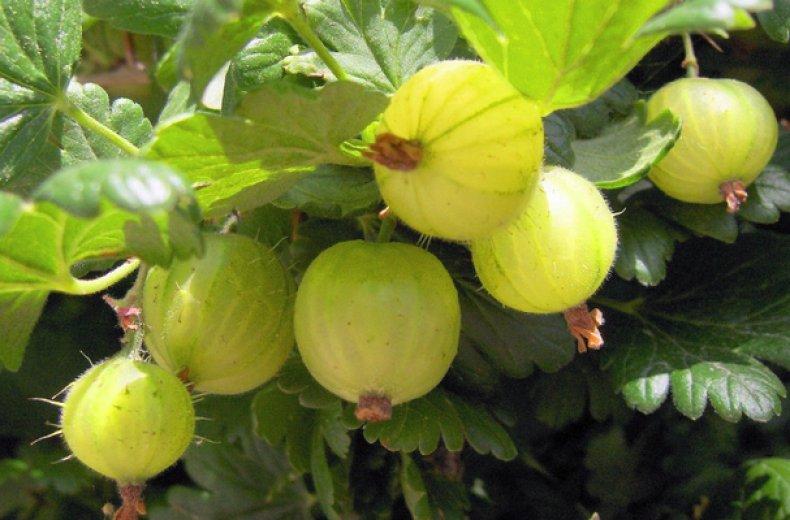
Commander
The breeders got this variety after a successful crossing of African gooseberries and Chelyabinsk green. The bush is compact, the twigs are covered with thorns. It is characterized by increased productivity. Fruits are small, tasty, when ripe they acquire an almost black color.
Ural emerald
The bush is medium in size, does not form many thorns. The fruits gain weight up to 8 g. The gooseberry owes its name to the bright color of the berries, which they acquire in the process of ripening. The variety is characterized by a strong odor and pleasant taste. Enters fruiting only 3 years after planting a shrub. It has good frost resistance and can withstand temperatures as low as -37 ° C.
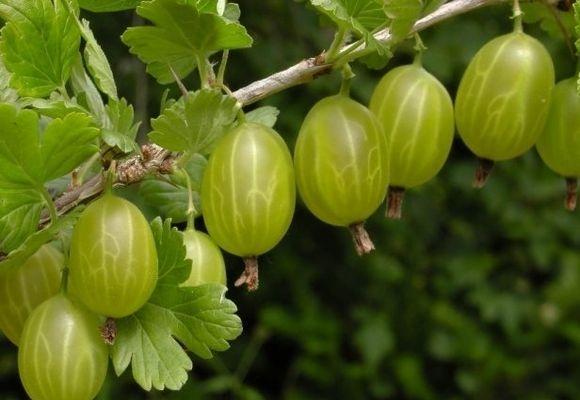
Consul
The variety is also known under a different name - Senator. A compact bush with abundant thorns on its branches. Fruits gain weight up to 6 g, at the stage of technical ripeness they become dark burgundy in color. Due to their thin skin, berries are not suitable for transportation. Their application is universal. Gooseberries can withstand temperatures as low as -38 ° C.
Belorussian
A small shrub with few thorns. The fruits reach a weight of 8 g, because of the thin skin they do not tolerate transportation well. In the process of maturation, they acquire a beautiful malachite color. The taste is sweet, the pulp is juicy. One of the time-tested mid-season gooseberry varieties, it can withstand temperatures as low as -39 C.

Krasnoslavyansky
A medium-sized shrub with few thorns. The fruits gain a mass of 9 g, in the process of ripening they become deep red. Due to its excellent taste characteristics, gooseberries are classified as dessert types. It starts bearing fruit as early as the next year after the planting was made. An adult plant gives up to 7 kg of yield. Immune to powdery mildew.
Thornless gooseberry
Over time, thornless gooseberry varieties have become very popular among gardeners. They do not cause discomfort during harvesting, and in general characteristics they are not inferior to ordinary varieties.
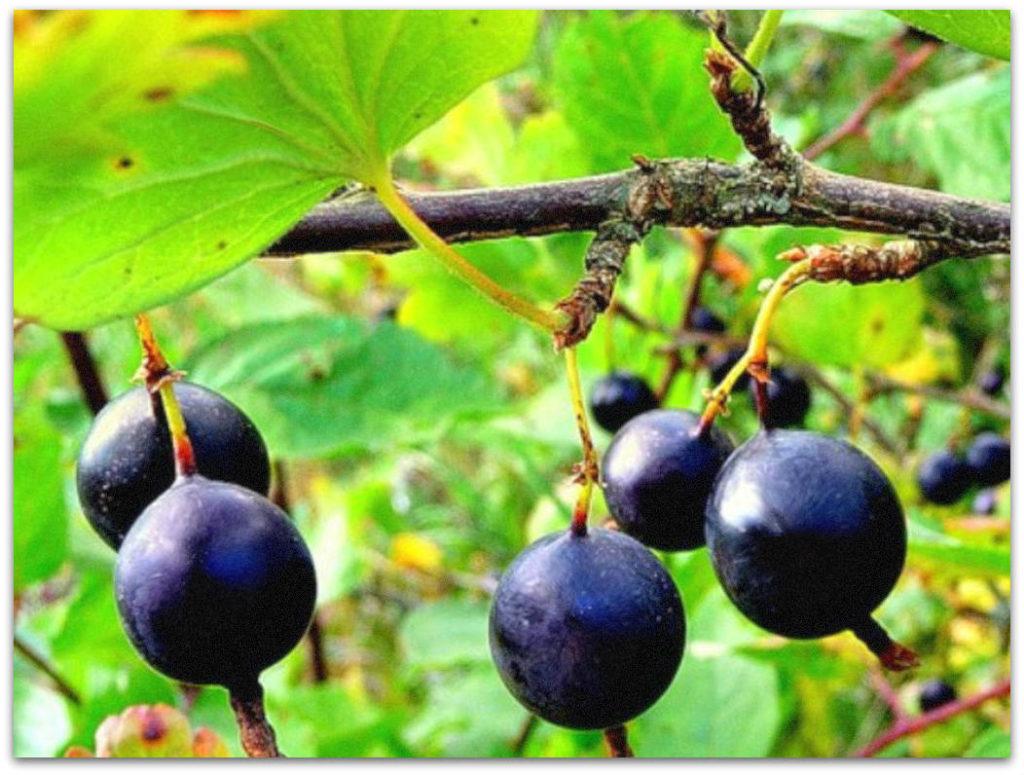
Eaglet
A medium-sized bush that does not form thorns at all. The berries gain weight up to 6 g, when ripe they turn black. Their skin is thin, the flesh is sweet and sour. The ripening period is early, the yield indicators are constant, high. Frost-resistant gooseberry with good immunity to fruit rot.
African
A small shrub without thorns with large fruits that turn purple when ripe. The taste is unusual, sweet, with hints of black currant. Enters fruiting a couple of years after planting the bush. Resists well almost all common diseases, except anthracnose. Frost-resistant grade.
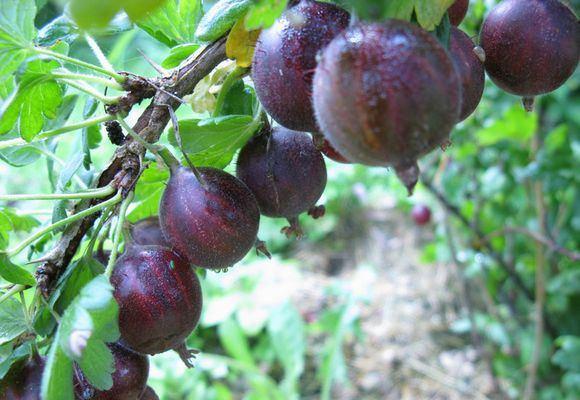
Northern captain
The variety most beloved by gardeners with a low-growing compact bush.When ripe, the fruits become almost black, weighing up to 5 g each. Ripening time is average, taste is good. Subject to the conditions of agricultural technology for growing gooseberries in Siberia and proper care, up to 12 kg of harvest is removed from each adult plant. Differs in increased resistance to drought, low temperatures.
The plant is not afraid of any common disease when carrying out preventive measures.
Ural shipless
Compact, large-fruited, mid-ripening variety, the fruits of which, when ripe, retain their green color. Each of them reaches a mass of up to 8 g. The skin is dense, which ensures the suitability of the crop for transportation and storage. Good cold resistance. Of the shortcomings, the ability to shed fruits early is distinguished, therefore they try to collect gooseberries of this variety before full ripening.
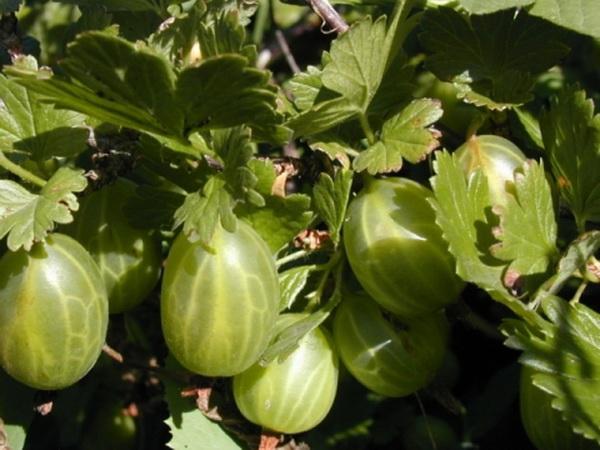
Thornless gooseberry
A compact small bush, the fruits gain weight up to 5 g. When ripening, the berries turn red, sweet, with a barely perceptible sourness. Gooseberry is immune to powdery mildew disease, cold-resistant.
How to choose the right variety?
Depending on climatic conditions, the same gooseberry variety can change taste, fruit size and yield. In order not to be disappointed, gardeners select a culture that is regionalized specifically for their region. Residents of the Urals and Siberia rely on the frost resistance of the culture, and only then select other characteristics of the culture according to their personal preferences.

The self-fertility of the selected variety is of great importance. If a shrub does not have this ability, then you will need to select and plant a pollinator for it. The gardener can choose the taste, shape and color of fruits at his discretion from those that are suitable for cultivation in his region.
Growing and caring for Siberian gooseberries
In harsh climates, it is better to plan the planting of gooseberry bushes in the spring. Due to the rapid onset of cold weather, which characterizes the Siberian autumn, the seedlings may not have time to take root and will not overwinter.
The plant prefers lighted areas without excessive stagnation of water, it does not tolerate shade.
When planting shrubs, the distance between them is left equal to 2 m. The width and depth of the hole is approximately 50 x 50 cm. Before planting, organic matter or complex mineral fertilizer is applied there. The seedling is placed at an angle, the roots are carefully straightened, sprinkled with soil, lightly tamped the soil and watered abundantly.
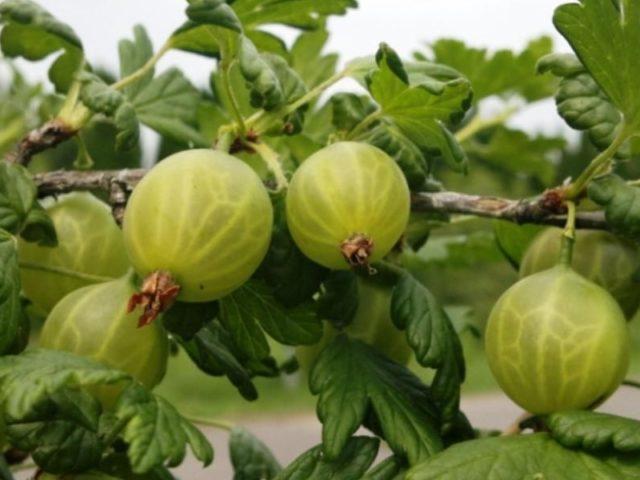
In a harsh climate, it is worth providing gooseberry care so that next year the bush will please with a harvest of useful berries. A special place is given to measures to prepare for the winter. After the end of fruiting, the fallen leaves are collected, the weeds are pulled out, the resulting garbage is burned. This will help prevent the development of pathogenic flora in the area. It is necessary to work extremely carefully in order to prevent damage to the root system of shrubs.
Before the onset of cold weather, the soil around the gooseberry is watered abundantly. This procedure stimulates the formation of new roots, which increases the cold resistance of the shrub. All diseased, damaged or dried branches must be cut out. In winter, 10 strong shoots are left, located at a sufficient distance from each other.
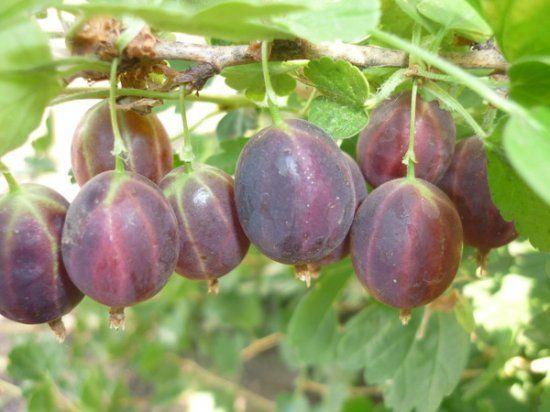
To kill pests wintering in the ground, you must carefully turn the top layer of the soil with a shovel or pitchfork. This procedure also helps to improve air and moisture permeability. Digging should not be deeper than 7 cm.This is enough to kill not only the pest itself, but also the larvae. In the same period, organic and mineral fertilizers are applied to the soil.
To protect the gooseberries from pathogens and pests, preventive treatment with insecticides and fungicides is carried out. Fungal diseases will help prevent spraying with Bordeaux mixture or iron sulfate. Work is carried out after the foliage has fallen.
Sanitary pruning is considered an important activity for the care of shrubs. As a rule, it is done in the spring, removing dry, broken and frozen processes. The soil around the plant is mulched.
